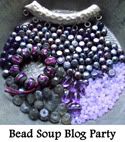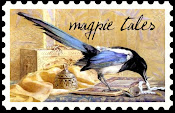Seventeenth Century Table Manners:
The pilgrims didn't use forks; they ate with spoons, knives, and their fingers. They wiped their hands on large cloth napkins which they also used to pick up hot morsels of food. Salt would have been on the table at the harvest feast, and people would have sprinkled it on their food. Pepper, however, was something that they used for cooking but wasn't available on the table.
In the seventeenth century, a person's social standing determined what he or she ate. The best food was placed next to the most important people. People didn't tend to sample everything that was on the table (as we do today), they just ate what was closest to them.
Serving in the seventeenth century was very different from serving today. People weren't served their meals individually. Foods were served onto the table and then people took the food from the table and ate it. All the servers had to do was move the food from the place where it was cooked onto the table.
Pilgrims didn't eat in courses as we do today. All of the different types of foods were placed on the table at the same time and people ate in any order they chose. Sometimes there were two courses, but each of them would contain both meat dishes, puddings, and sweets.
More Meat, Less Vegetables
Our modern Thanksgiving repast is centered around the turkey, but that certainly wasn't the case at the pilgrims's feasts. Their meals included many different meats. Vegetable dishes, one of the main components of our modern celebration, didn't really play a large part in the feast mentality of the seventeenth century. Depending on the time of year, many vegetables weren't available to the colonists.
The pilgrims probably didn't have pies or anything sweet at the harvest feast. They had brought some sugar with them on the Mayflower but by the time of the feast, the supply had dwindled. Also, they didn't have an oven so pies and cakes and breads were not possible at all. The food that was eaten at the harvest feast would have seemed fatty by 1990's standards, but it was probably more healthy for the pilgrims than it would be for people today. The colonists were more active and needed more protein. Heart attack was the least of their worries. They were more concerned about the plague and pox.
People tend to think of English food at bland, but, in fact, the pilgrims used many spices, including cinnamon, ginger, nutmeg, pepper, and dried fruit, in sauces for meats. In the seventeenth century, cooks did not use proportions or talk about teaspoons and tablespoons. Instead, they just improvised. The best way to cook things in the seventeenth century was to roast them. Among the pilgrims, someone was assigned to sit for hours at a time and turn the spit to make sure the meat was evenly done.
Since the pilgrims and Wampanoag Indians had no refrigeration in the seventeenth century, they tended to dry a lot of their foods to preserve them. They dried Indian corn, hams, fish, and herbs.
Dinner for Breakfast: Pilgrim Meals:
The biggest meal of the day for the colonists was eaten at noon and it was called noonmeat or dinner. The housewives would spend part of their morning cooking that meal. Supper was a smaller meal that they had at the end of the day. Breakfast tended to be leftovers from the previous day's noonmeat.
In a pilgrim household, the adults sat down to eat and the children and servants waited on them. The foods that the colonists and Wampanoag Indians ate were very similar, but their eating patterns were different. While the colonists had set eating patterns—breakfast, dinner, and supper—the Wampanoags tended to eat when they were hungry and to have pots cooking throughout the day.
















































.png)








.jpg)





